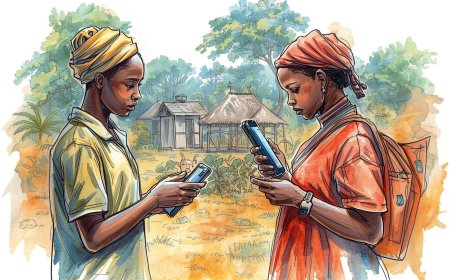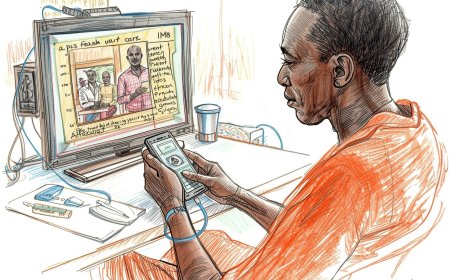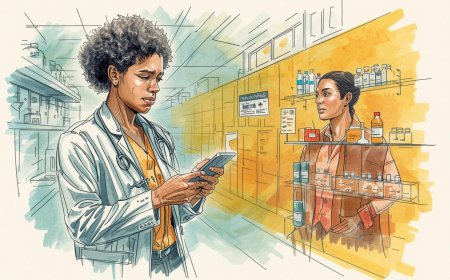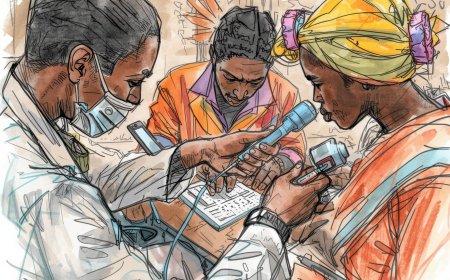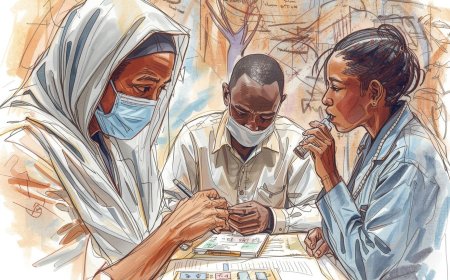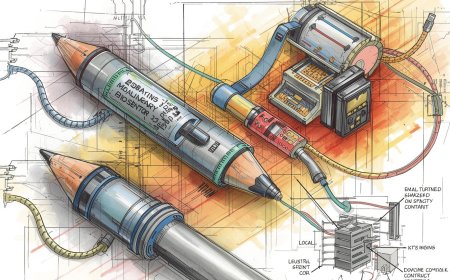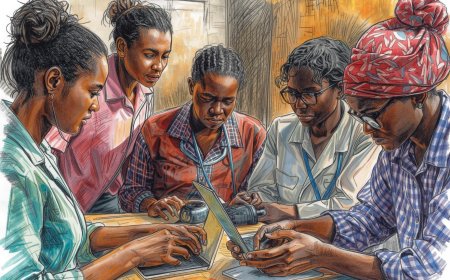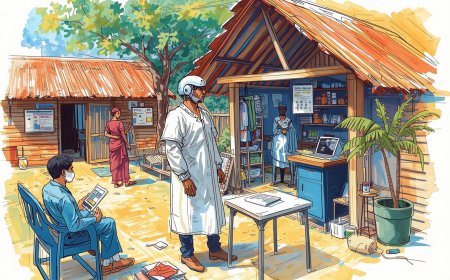Top mHealth Features That Actually Increase Patient Engagement in Low-Resource Settings
Actionable, Africa-focused guide listing the mHealth features proven (or plausibly supported by evidence) to increase patient engagement in low-resource settings. Covers two-way messaging, offline-first design, voice/IVR, CHW integration, personalization, privacy, incentives, monitoring metrics, pitfalls, and a checklist you can copy into a project brief. APA citations and live links for every source.
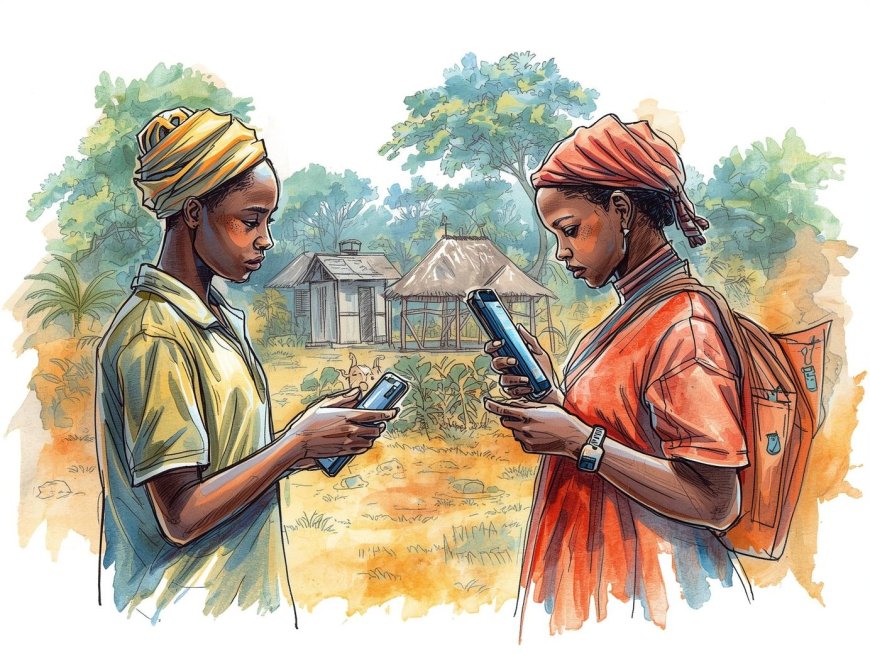
Short brief: If your mHealth app talks at people instead of with them, they’ll ignore it — or worse, they’ll turn off the phone and blame your project. This guide distills evidence and field-practice into a compact, actionable list of features and implementation tips that really move the needle on engagement where connectivity is patchy, literacy varies, and phones are precious.
Expect practical checklists, African case examples (MomConnect, WelTel, CommCare), and a no-nonsense roadmap so your next pilot doesn’t become a data graveyard.
Why engagement matters (and what “engaged” looks like)
Engagement is not downloads or logins. In low-resource settings it’s measurable behaviour: patients picking up meds, attending scheduled visits, responding to a symptom check, or following a CHW’s advice. Interventions that combine digital prompts with human follow-up and local adaptation show better outcomes than one-way push messages alone. WHO guidance stresses that digital interventions must be feasible, acceptable, and equitable to strengthen health systems. World Health Organization
Top mHealth features that increase engagement — the evidence-backed list
1) Two-way messaging with human follow-up (the single most powerful feature)
Two-way SMS (or chat) that enables a trusted human to respond (clinician/CHW/call-centre) drives adherence and retention. The WelTel randomized trial in Kenya showed weekly two-way SMS check-ins plus clinician follow-up improved ART adherence and viral suppression. Two-way flows build trust, catch problems early, and avoid the “ignore the robot” problem. The Lancet+1
Practical: triage incoming replies automatically (keyword rules) and route “red” replies to a human within X hours.
2) Reminders + scheduling (SMS/IVR reminders reliably increase attendance)
Automated appointment reminders—SMS, voice prompts, or automated calls—consistently raise clinic attendance across settings (systematic reviews report ~30–50% improved attendance). Reminders work best when combined with an easy “confirm/cancel” reply pathway and human follow-up for non-responders. PMC+1
Practical: send a 7-day reminder, a 2-day reminder, and a day-of reminder; enable quick reply codes (e.g., “1 = coming, 2 = can’t come”).
3) Offline-first apps + lightweight sync (design for intermittent networks)
Design apps to work offline and sync when connectivity is available. Offline capability prevents frustrated drop-off in areas with patchy mobile internet — a consistent recommendation in mHealth reviews. CommCare, ODK and similar platforms support offline workflows and have an extensive evidence base showing improved CHW performance and service delivery. Dimagi+1
Practical: batch uploads, small payloads, and resumable uploads reduce data costs and failures.
4) Voice & IVR options for low-literacy users
IVR (interactive voice response) and pre-recorded messages in local languages are essential when literacy or reading speed is low. Evidence shows voice approaches boost reach and comprehension compared to text-only campaigns in many contexts. MomConnect used messaging and helpdesk voice support to reach millions of pregnant women in South Africa. gkc.himss.org+1
Practical: offer user choice at enrolment (SMS vs IVR) and schedule voice calls at convenient times.
5) Local language, cultural adaptation & simple UX
Messages and app screens must use local words, short sentences, culturally appropriate metaphors, and visual icons. Pre-test messages with target users; formative research increases uptake and avoids embarrassing mistranslations. Systematic reviews highlight localization as a common success factor. BioMed Central+1
Practical: keep SMS <160 characters where possible; use audio and images for critical actions.
6) CHW / human-in-the-loop integration (digital + human = multiplier)
Digital systems that empower CHWs (task lists, prompts, decision support) increase follow-through: CHWs enroll patients, interpret messages, and do doorstep follow-ups. CommCare implementations show frontline worker performance and client behaviours improve when apps are combined with supportive supervision. Dimagi+1
Practical: build workflows that trigger CHW tasks when patients don’t respond.
7) Personalization & tailoring (timing, content, and cadence)
Tailoring messages to patient age, condition, pregnancy stage, language, or medication regimen increases relevance and engagement. Evidence indicates tailored messages outperform generic blasts in behaviour change. JMIR mHealth and uHealth
Practical: collect minimal segmentation data at enrolment and use simple rule engines to vary content.
8) Rapid, visible feedback loops (show patients their data & progress)
Dashboards or simple progress messages (e.g., “You’ve taken 10/14 doses”) help patients see progress and feel rewarded. Feedback works best when immediate and actionable. Pilot studies and program reports emphasize feedback as a retention tool. Dimagi+1
Practical: weekly summary SMS and CHW review during home visits.
9) Privacy, consent & transparent data use (trust is engagement)
Patients won’t engage if they fear data misuse. Implement clear consent scripts, minimal data collection, secure storage, and role-based access. WHO and national laws stress governance, and privacy concerns reduce uptake in sensitive areas (e.g., HIV, mental health). World Health Organization+1
Practical: craft a one-sentence consent message in the local language and log consent.
10) Low-cost incentives & reminders (with ethics & sustainability in mind)
Small incentives (airtime top-ups, transport vouchers) can boost short-term engagement, but sustainability and equity matter. Where feasible, align incentives with health system reimbursements or employer programs rather than recurring donor payments. Reviews show incentives help uptake but must be planned carefully. BioMed Central
Practical: pilot incentives with a clear exit/sustainability plan.
Implementation roadmap — turn features into a working service
-
Define specific engagement goals (attendance, adherence, 2-way replies).
-
Segment users: phone type, language, literacy, clinical group.
-
Select core features: two-way messaging + CHW integration + offline app + IVR options.
-
Prototype & pre-test: 10–30 users per segment; refine wording and timing.
-
Run a 3-month pilot (n=500–2,000) with monitoring (delivery rates, responses, attendance).
-
Iterate: compress messages, change send windows, add human escalation rules.
-
Scale: negotiate telco rates, integrate with Ministry systems (DHIS2/EMR), build support workflows.
(WHO’s digital health guidance and program reviews recommend embedding evaluation from day one.) World Health Organization+1
Measurement: KPIs that mean something in low-resource settings
-
Process: delivery rate, reply rate (two-way), IVR play rate, sync success rate.
-
Engagement: % users who reply at least once/month, average time-to-human-response.
-
Behavioural outcomes: appointment attendance, medication pick-up, facility delivery rate.
-
Equity metrics: engagement by gender, age, rural/urban, language.
Use stepped-wedge or pre/post where RCTs aren’t feasible; program evidence from MomConnect and CommCare often relies on real-world monitoring and pragmatic evaluations. PMC+1
Short African case studies you can learn from
WelTel (Kenya) — two-way SMS + clinician follow-up
WelTel weekly check-ins (“How are you?”) plus rapid clinician follow-up improved ART adherence and viral load outcomes in a landmark RCT in Kenya (WelTel Kenya1). The study illustrates how two-way human-mediated messaging beats one-way reminders for complex care. The Lancet+1
MomConnect (South Africa) — national scale + helpdesk
MomConnect combined tailored maternal SMS with a helpdesk and built-in linkages to the health system; evaluations show high reach and improvements in some service uptake metrics. National scale demonstrates the power of government-backed programs and multi-channel design (SMS + helpdesk + health worker integration). PMC+1
CommCare deployments — CHW empowerment + measurable outcomes
Dimagi’s CommCare platform supports offline case management and tasking for CHWs; its evidence base shows improved screening, antenatal visits, and service delivery when digital tools are combined with supervision. CommCare examples underline the multiplier effect of digital + human workflows. Dimagi+1
Common pitfalls (so your project doesn’t join the graveyard)
-
One-way broadcast only — low uptake; no recourse for patients. Use two-way flows. The Lancet
-
Assuming smartphones — many users have feature phones; always include SMS/IVR. GSMA
-
No offline support — app unusable in low connectivity; build offline sync. Dimagi
-
No human escalation — automated alerts without human follow-up leave patients stranded. PubMed
-
Ignoring telco costs & delivery reports — messages that don’t reach users waste budgets. Negotiate bulk rates and request delivery receipts. GSMA
Quick copy-paste checklist for your next mHealth pilot
-
Engagement goals (behavioural) defined and measurable.
-
Two-way messaging + routing to human responders set up.
-
Offline app or lightweight SMS/IVR option included.
-
Local language and pretested message bank ready.
-
CHW workflows & escalation pathways defined.
-
Privacy & consent script logged at enrolment.
-
Telco rates negotiated and delivery reports enabled.
-
Monitoring dashboard for delivery, replies, attendance, equity.
References (APA, with live links)
-
World Health Organization. (2019). Recommendations on digital interventions for health system strengthening. https://www.who.int/publications/i/item/9789241550505. World Health Organization
-
Lester, R. T., Ritvo, P., Mills, E. J., Kariri, A., Karanja, S., Chung, M. H., ... & Plummer, F. A. (2010). Effects of a mobile phone short message service on antiretroviral treatment adherence in Kenya (WelTel Kenya1): a randomised trial. Lancet, 376(9755), 1838–1845. https://doi.org/10.1016/S0140-6736(10)61997-6. https://www.thelancet.com/article/S0140-6736(10)61997-6/fulltext. The Lancet+1
-
LeFevre, A. E., et al. (2018). Program reach and messaging exposure of MomConnect: a national mobile health messaging program in South Africa. Global Knowledge Community / HIMSS; evaluation summary. https://pmc.ncbi.nlm.nih.gov/articles/PMC5922477/. PMC
-
Aranda-Jan, C. B., Mohutsiwa-Dibe, N., & Loukanova, S. (2014). Systematic review on what works, what does not work and why of implementation of mobile health (mHealth) projects in Africa. BMC Public Health, 14, 188. https://bmcpublichealth.biomedcentral.com/articles/10.1186/1471-2458-14-188. BioMed Central
-
Guy, R., Hocking, J., Wand, H., Stott, S., Ali, H., Kaldor, J., & Tabrizi, S. (2012). How effective are short message service reminders at increasing clinic attendance? A meta-analysis and systematic review. BMC Public Health, 12, 220. https://www.ncbi.nlm.nih.gov/pmc/articles/PMC3419880/. PMC
-
Marcolino, M. S., Oliveira, J. A. Q., D’Agostino, M., Ribeiro, A. L. P., Alkmim, M. B., Novillo-Ortiz, D. (2018). The impact of mHealth interventions: systematic review of systematic reviews. JMIR mHealth and uHealth, 6(1), e23. https://mhealth.jmir.org/2018/1/e23/. JMIR mHealth and uHealth
-
Dimagi. (2024). CommCare evidence base. https://dimagi.com/resources/commcare-evidence-base/. Dimagi
-
GSMA. (2024). The State of Mobile Internet Connectivity 2024 (report). https://www.gsma.com/r/wp-content/uploads/2024/10/The-State-of-Mobile-Internet-Connectivity-Report-2024.pdf. GSMA
What's Your Reaction?
 Like
0
Like
0
 Dislike
0
Dislike
0
 Love
0
Love
0
 Funny
0
Funny
0
 Angry
0
Angry
0
 Sad
0
Sad
0
 Wow
0
Wow
0




